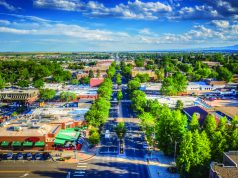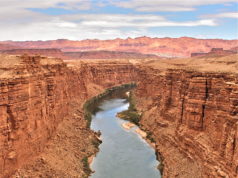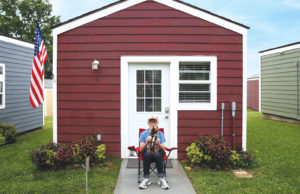during the weekend and vowing to strike American cities with suicide
attacks were greeted with skepticism by analysts Monday, who said the
militant group lacks the capability and reach to carry out such
missions in the U.S.
A 71-second video posted on the Internet claimed that the Pakistani Taliban planned an attack in
in retaliation for the U.S. drone missile strike that killed the
insurgent group’s leader, Baitullah Mahsud, last August. A voice
speaking in Urdu states that the group “takes full responsibility for
the recent attack in the
In another video made public Monday, Pakistani
Taliban leader Hakimullah Mahsud warned that his insurgent group had
already deployed suicide bombers in the U.S. and that they would soon
carry out attacks in major American cities. Mahsud states that
“Our (suicide bombers) have penetrated the terrorist
America,” said Mahsud, flanked by two militants masked with white
veils. “We will give extremely painful blows to the fanatic America.”
police have said there is no evidence to support the Pakistani
Taliban’s claim of responsibility for a sport-utility vehicle found in
on Saturday carrying materials including plastic cans filled with
gasoline, M-88 firecrackers, three propane tanks, wires and two alarm
clocks. The militant group has previously said it was responsible for
an attack in the U.S. that it was not involved in. Baitullah Mahsud had
falsely claimed that the Taliban carried out a mass shooting in
During its two-year existence, the Pakistani Taliban
has focused its attention largely on attacking Pakistani security
forces and civilians. It has directed many of its suicide bombings on
U.S. and Western targets in
It did claim a role in the December suicide bombing of a CIA base in
border, an attack that killed seven CIA workers. That base, located
near Khost, was again targeted by a suicide car bomb attack Monday that
killed one Afghan civilian and injured two Afghan security guards.
Hakimullah Mahsud’s appearance in the video made
public Monday confirmed that the young Taliban leader had survived a
U.S. drone missile strike along the border between North and
Both Pakistani and U.S. officials had claimed that
he had died in the January missile strike until last week, when
Pakistani security officials confirmed that he had survived the attack.
Some analysts doubted Mahsud’s claims that suicide
bombers were poised to unleash a wave of attacks in U.S. cities. The
Pakistani Taliban’s mission is focused on battling the government in
they said, and the group does not have the logistics in place to carry
out attacks thousands of miles away from their strongholds in the
tribal belt along the Afghan border.
“Yes, they claim a lot of things — that they’re not confined to
a security analyst with the Pakistan Institute for Peace Studies. “They
want to build an image that says, ‘We are capable of reaching your home
and hurting you.’ But they don’t have that capability.”
The attack Monday in Khost province took place outside
said Mobariz Zadran, a spokesman for the provincial governor. Unlike
the December attack, in which the bomber blew himself up inside the
heavily fortified base, the assailant — driving a car packed with
explosives — did not manage to make his way inside. The car blew up in
a screening area outside, U.S. military officials said.
After the December attack, a video that had been
made ahead of time but was released to the public later showed Mahsud
sitting next to the Jordanian who carried out the bombing. The bomber,
Humam Khalil Abu-Mulal al-Balawi, said the attack he was planning would
avenge the killing of Baitullah Mahsud last year.
———
(c) 2010, Los Angeles Times.
Visit the Los Angeles Times on the Internet at http://www.latimes.com/
Distributed by McClatchy-Tribune Information Services.














